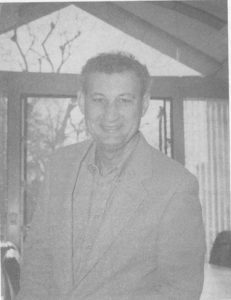
Larry R. Dalton, University of Southern California
Dr. Dalton was born in Belpre, Ohio. He received his B.S. and M.S. degrees from Michigan State University, Honors College, and his Ph.D. degree from Harvard University. Before coming to USC, he was a member of the faculty at Vanderbilt University and the State University of New York at Stony Brook. At USC, Dr. Dalton is the Harold E. and Lillian M. Moulton Professor of Chemistry, a Co-Director of the Loker Hydrocarbon Institute, a Professor of Materials Science and Engineering in the College of Engineering, and the Director of the Department of Defense MURI Center for Nanoscale Materials and Processing.
Dr. Dalton’s career has been characterized by achievements at the interface of chemistry with other disciplines, and has earned him a national and international reputation in magnetic resonance spectroscopy, biophysics, materials science, nanotechnology, and optical physics. Not only is Dr. Dalton the author of over 300 papers, he has recently served on Federal and non-Federal advisory boards for organizations as diverse as the NSF Presidential Faculty Fellows Program, the University of Illinois NIH EPR Biomedical Technology Resource Center, the Princeton Materials Institute, and the ACS Chemistry of Materials Journal. Outside of the academic world, Dr. Dalton has served as Chairman of the Chemistry and Medical Divisions of the California State and Los Angeles County Science Fairs, has participated in the California Academy of Sciences High School Student Research Experience program, and been featured in the ACS Dimensions in Science series.
Research Interests: Dr. Dalton’s research focuses on four areas: nanoscale materials and processing; design, synthesis, characterization, and processing of new electroactive materials; nonlinear optical spectroscopy; and chemistry and physics at interfaces.
The general objective of his work in nanoscale materials and processing is the realization of precise control over the organizations of atoms not only in molecules (subnanometer scale) but also over the dimensions from 1 to 5000 nanometers. This research includes: organic, inorganic, and organometallic materials, dendrimers, block copolymers, polymer microspheres, and nanocomposites; it uses STM/AFM/NSOM techniques and STM nanolithography; it involves understanding the theory of electrical and magnetic interactions between particles separated by nanoscale dimensions; and it has applications to LED’s, solar cells, sensor protection, sensors, nano and microelectronics and micromechanical devices.
The research in new electroactive materials seeks to develop new optical, electrical, and magnetic devices based on materials with special electronics structures. Dr. Dalton is particularly attracted to materials exhibiting controlled quasi-electronic delocalization or quantum confinement, in mixed valence materials capable of facile intramolecular electron transfer, and in charge-transfer complexes. Current research in his lab focuses on materials exhibiting unusual photoconductivity, electroluminescence, photoluminescence, electro-optical and protochromic properties.
Dr. Dalton is developing new nonlinear optical spectroscopic techniques that advance our ability to see beyond traditional one-photon spectroscopy. In particular, he is interested in femtosecond, frequency-agile, multi-dimensional techniques executed with phase-sensitive detection. Recently he has used phase-mismatch spectroscopy to detect multi-photon excitations in C60 and C70 from 500 nm to 2.5 microns. Other recent applications include GaAs quantum-well materials and mixed-valence organic metallic materials.
Dr. Dalton probes the science and engineering of materials integration where problems of chemistry and physics at interfaces must be addressed. He is attacking the synthetic problem of stable coupling of organic materials to inorganic materials including semiconductor materials and is exploring both theoretically and experimentally the role of surface forces in defining molecular order. Research in this area ranges from newly developed noncentrosymetrically-assembled, phase-separated ABCD block copolymers to control the reactive plasmas at organic surfaces and to covalent coupling of organic and semiconductor surfaces.
Wednesday, April 23, 1997
USC Faculty Center
“Recent Advances in the Development of Polymeric Electro-Optic Materials”
